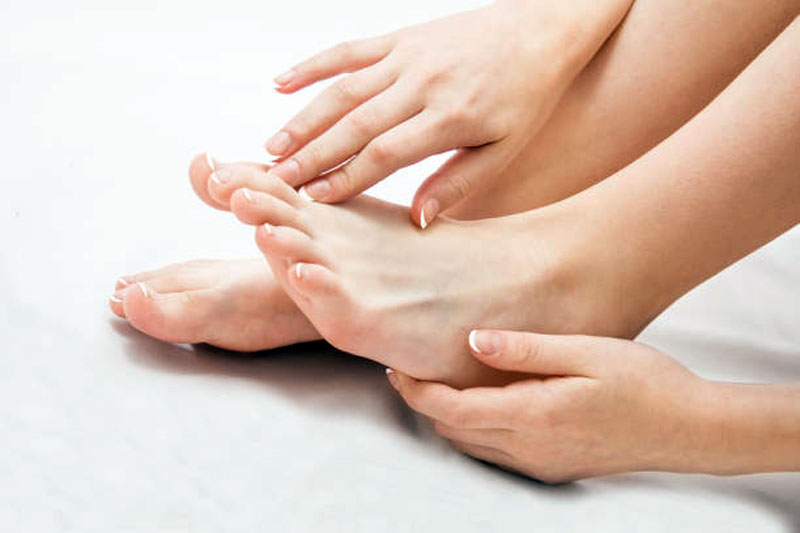
The question is, how can you tell if you have a toe fungus in the first place?
Signs and Symptoms of a Toe Fungus
If you notice some or all of these signs, you’ve likely developed a toe fungus:
- Thickened or misshaped toenails. First, you might notice your toenails start to thicken or become misshaped. You should have a good understanding of what your toenails look like normally, so this symptom should be obvious. Your toenail might start getting too thick to cut with clippers.
- Discolored toenails. Discolored toenails are also a hallmark sign of a toenail infection. You may notice a yellowy color, or areas of darkness. There may also be a white dot that slowly grows bigger.
- Brittle or crumbly toenail texture. Pay attention to the texture of your toenail. If you notice it start to get especially brittle, or if it has a crumbly appearance, it’s likely due to a fungal infection.
- Foul-smelling toenails. Most people’s feet don’t exactly smell pleasant, but fungal infections sometimes come with an especially foul odor.
It’s also possible to develop a fungus that infects your fingernails, but toenail fungi are more common.
If these symptoms begin to grow severe, or if your topical treatments aren’t working, it may be time to see a doctor.
Reducing Your Risk of a Fungal Infection
There are multiple sub-types of fungi that can be responsible for a fungal toe infection, but the most common is called a dermatophyte. It can affect people of any age, and in any area, but there are several factors that can increase your risk of a fungal infection.
If you’ve gotten (and hopefully, successfully treated) a toenail infection, there are some steps you can take to reduce your susceptibility to future infections:
- Wear socks with your shoes. Fungal infections tend to manifest and spread easily when allowed to grow in dark, damp conditions. If you’re the type of person who wears shoes without socks, you may be more likely to experience this. Wearing socks can help absorb some of that extra moisture, and reduce the chance of getting this this kind of condition.
- Use drying foot powder. As a measure of added protection, you may consider applying a dry powder to your socks or feet before putting them on. This is especially important if you feel you sweat more than the average person. While you’re at it, if you’re engaging in prolonged, strenuous (i.e., sweaty) activity, try to change your socks every few hours.
- Keep your nails trimmed and smooth. Fungi like to make residence in cracks and shallow areas in your toes. If you allow your toenails to grow out, or if they’re cracked or damaged, they could provide a more desirable location for fungi. Instead, take good care of your toenails, keeping them relatively trim and filing them down when necessary. If you notice a crack or aberration in the nail, try to smooth it out.
- Keep your feet clean. Sometimes, simply cleaning your feet can get rid of a fungal infection before it has a chance to take root. After sweaty activities or after walking around barefoot, take the chance to wipe down your feet. When showering, be sure to give your feet a deep clean with hot, soapy water. The cleaner your feet are, the better.
- Avoid walking barefoot. Walking around barefoot in dirty or public areas can greatly increase your susceptibility to fungal infections. This is why fungal infections are common at the gym, where people often walk barefoot in locker rooms and shower areas. It’s best to wear some form of footwear, like socks, flip-flops, or slippers to protect your feet.
- Take extra precautions when dealing with an injury. If you have a toe-related injury, you may want to take additional precautions, since fungi can use the injury area as an opportunity to grow. For example, if you have a cut or scratch on your toe, be sure to apply a bandage as soon as possible.
Fortunately, most toenail fungal infections don’t present a major healthy issue, but if you want to treat them with medicine, you can also consult with your doctor. Pay close attention to how you clean your feet and how and where you walk, and be proactive if you notice the signs and symptoms of an infection.
Comments
comments